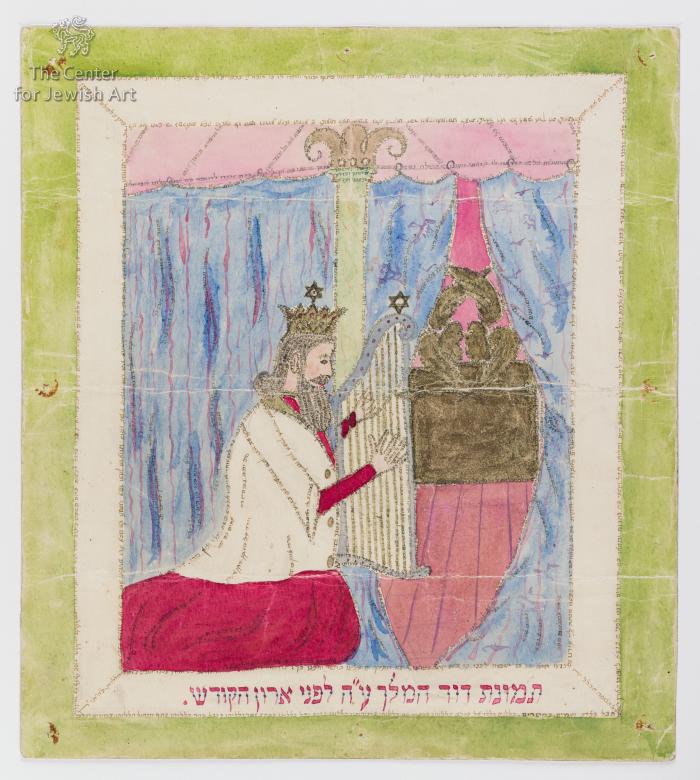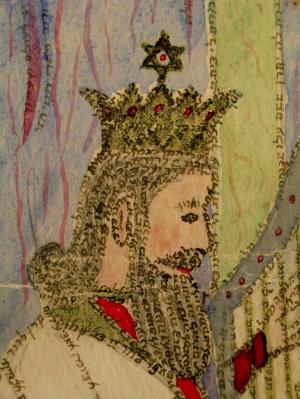Obj. ID: 49751
Hebrew Illuminated Manuscripts Micrography, Lviv (Lvov, Lwów, Lemberg), circa 1900

The following description was prepared by William Gross:
Micrography, the scribal practice of employing minuscule script to delineate shapes or figural designs, is an art form that has been used by Jews for over a millennium. In fact an original art form created by Jewish scribes, this intricate decorative technique was first practiced in the tenth century in Egypt and the Land of Israel. It developed within the Islamic cultural milieu in which the written word was frequently transformed into elaborate decorative patterns.
Much of the earliest micrography we have is found in biblical codices. These Bibles in book form were not subject to the stringent rabbinical rules that applied to the writing and form of a Torah scroll, whether the arrangement of text of the form of the letters. They also were unaffected by any prohibition against ornamentation, and thus offered the scribe considerable latitude in arranging and decorating their text.
By the early thirteenth century, micrography appeared in Europe in the Sephardic manuscripts of Spain and Portugal as well as in Ashkenazic works produced in Northern Europe. While manuscript production on the whole declined in the sixteenth century, micrography continued to be used to on Ketubot (marriage contracts) and wall hangings. From the seventeenth century onward, scribes who practiced the art of micrography favored the texts of the five Megillot, Psalms and Proverbs as the basis of their art.
In 1798, the invention of lithography extended the micrographic arts beyond the exclusive realm of one-of-a-kind manuscripts. Throughout the nineteenth and twentieth centuries, the mass production of micrographic prints allowed this ancient art form to reach a much broader Jewish audience. These prints encompassed a wide variety of themes; biblical portraits and vignettes as well as panoramas of the holy sites of Israel were especially popular. Famous rabbinic, political and literary personalities such as Rabbi Shneur Zalman of Lyady, Theodor Herzl and Hayyim Nahman Bialik, were also favored subjects, whose micrographic portraits were rendered from the texts of their own books and poems.
This is a micrographic portrait of King David carried out in the style of the "Lubok", a form of folk illustration, from the Ukraine. The green painted outer section still bears the signs of the tacks that were used to put it up in what was probably the Succah of the family that owned it. The image of King David kneeling and playing his harp is one that was widely used and copied. The original source for the depiction is a figure in one of a series of biblical etchings made by the 17th-century artist Matthaeus Merian.



